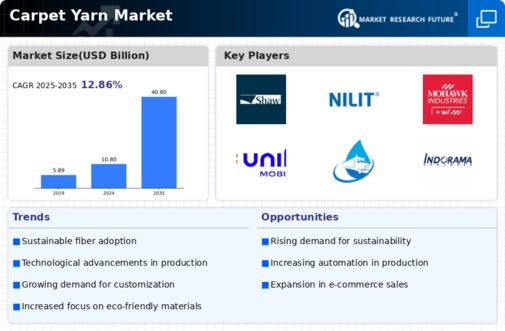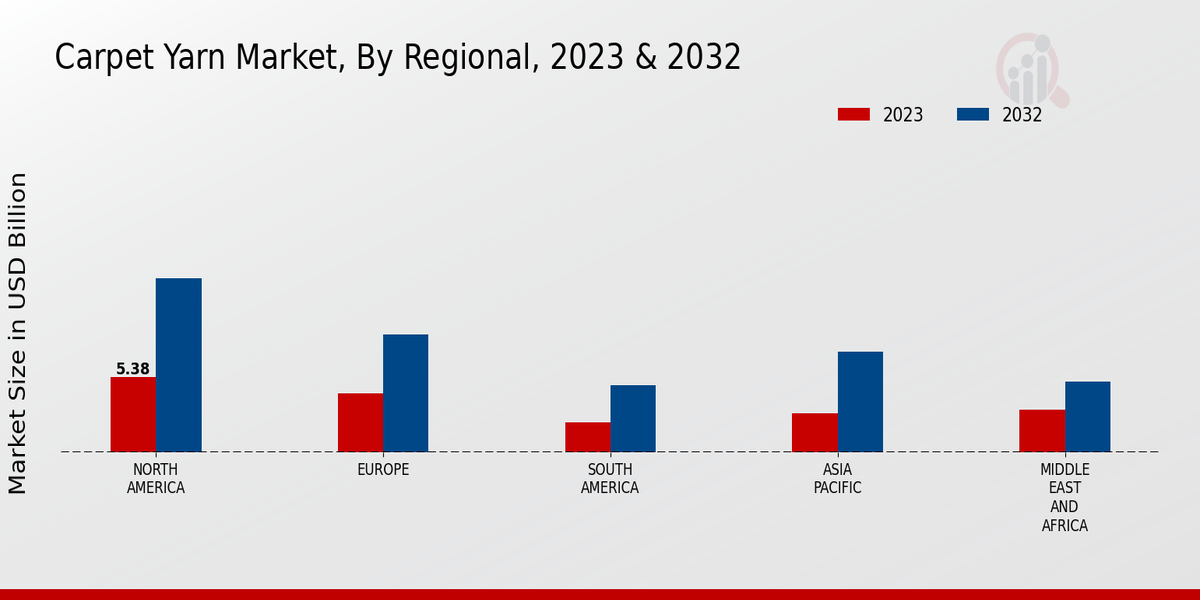Market Growth Projections
The Global Carpet Yarn Market Industry is projected to experience substantial growth over the next decade. With an expected market value of 10.8 USD Billion in 2024, the industry is set to expand significantly, reaching an estimated 40.8 USD Billion by 2035. This growth trajectory indicates a compound annual growth rate of 12.86% from 2025 to 2035. Such projections reflect the increasing demand for carpet yarn driven by factors such as urbanization, technological advancements, and evolving consumer preferences. The anticipated growth presents opportunities for manufacturers and stakeholders to innovate and adapt to changing market dynamics.
Growth of the Real Estate Sector
The expansion of the real estate sector significantly influences the Global Carpet Yarn Market Industry. As urbanization accelerates and housing demand rises, the need for flooring solutions, including carpets, increases correspondingly. New residential and commercial constructions often incorporate carpets for aesthetic and functional purposes, thereby driving demand for carpet yarn. This trend is particularly evident in emerging markets, where rapid urban development is underway. The Global Carpet Yarn Market Industry is poised to benefit from this growth, as the market is expected to witness a compound annual growth rate of 12.86% from 2025 to 2035, reflecting the increasing integration of carpets in modern architecture.
Consumer Preference for Customization
In the Global Carpet Yarn Market Industry, consumer preferences are shifting towards personalized and customized products. This trend is fueled by the desire for unique home decor solutions that reflect individual tastes and styles. Manufacturers are responding by offering customizable carpet yarn options, allowing consumers to select colors, textures, and patterns that suit their specific needs. This level of personalization not only enhances customer satisfaction but also fosters brand loyalty. As the market adapts to these changing preferences, it is likely to see a surge in demand, further contributing to the industry's growth trajectory in the coming years.
Rising Demand for Sustainable Materials
The Global Carpet Yarn Market Industry experiences a notable shift towards sustainable materials, driven by increasing consumer awareness regarding environmental issues. Manufacturers are increasingly adopting eco-friendly practices, utilizing recycled fibers and organic materials in their products. This trend aligns with the global push for sustainability, as consumers seek carpets that minimize their ecological footprint. The demand for sustainable carpet yarn is projected to grow significantly, contributing to the overall market value, which is expected to reach 10.8 USD Billion in 2024. This shift not only enhances brand reputation but also meets regulatory requirements, thereby fostering growth in the Global Carpet Yarn Market Industry.
Increasing Awareness of Indoor Air Quality
The Global Carpet Yarn Market Industry is increasingly influenced by growing awareness of indoor air quality and its impact on health. Consumers are becoming more conscious of the materials used in their homes, seeking carpets that contribute to a healthier living environment. This awareness drives demand for low-VOC (volatile organic compounds) and hypoallergenic carpet yarns, which are perceived as safer options. Manufacturers are responding by developing products that meet these health standards, thereby enhancing their market appeal. As this trend continues to gain traction, it is expected to bolster the growth of the Global Carpet Yarn Market Industry, aligning with consumer health priorities.
Technological Advancements in Yarn Production
Technological innovations play a crucial role in enhancing the efficiency and quality of carpet yarn production. The Global Carpet Yarn Market Industry benefits from advancements such as automation, digitalization, and improved manufacturing processes. These technologies enable manufacturers to produce high-quality yarns with reduced waste and lower energy consumption. For instance, the implementation of advanced weaving techniques and machinery has led to the creation of intricate designs and patterns, appealing to a broader consumer base. As these technologies continue to evolve, they are likely to drive the market's growth, positioning it for a substantial increase in value, projected to reach 40.8 USD Billion by 2035.












